
How to Use 18650 Li-ion Battery x 2: Examples, Pinouts, and Specs
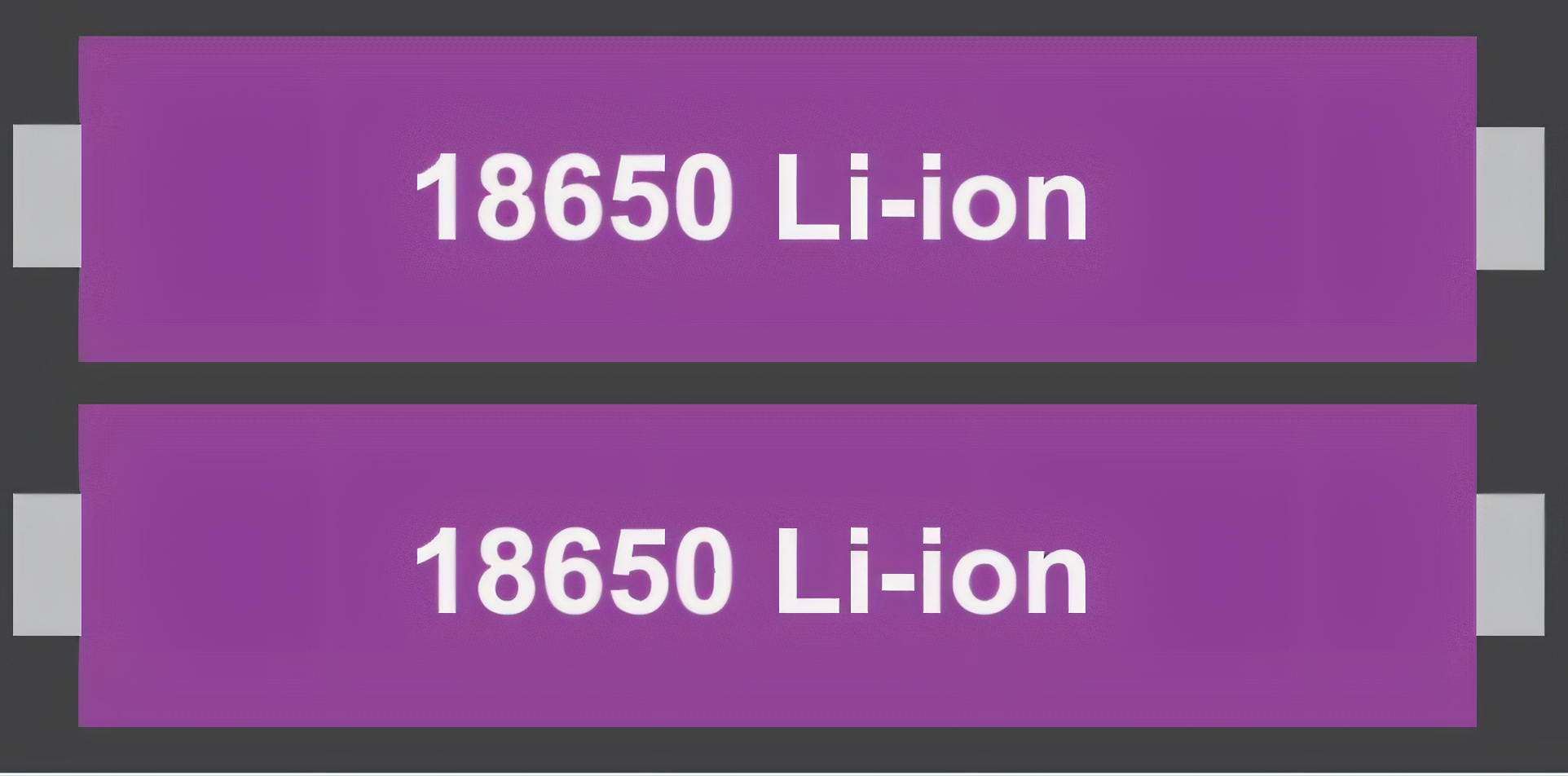
 Design with 18650 Li-ion Battery x 2 in Cirkit Designer
Design with 18650 Li-ion Battery x 2 in Cirkit DesignerIntroduction
The 18650 Li-ion Battery is a rechargeable lithium-ion cell in a cylindrical form factor. Manufactured by Samsung, these batteries are known for their high energy density, long life, and stable discharge characteristics. They are commonly used in a variety of electronic devices, including laptops, flashlights, electric vehicles, and as part of battery packs for energy storage in portable power banks or larger systems.
Explore Projects Built with 18650 Li-ion Battery x 2
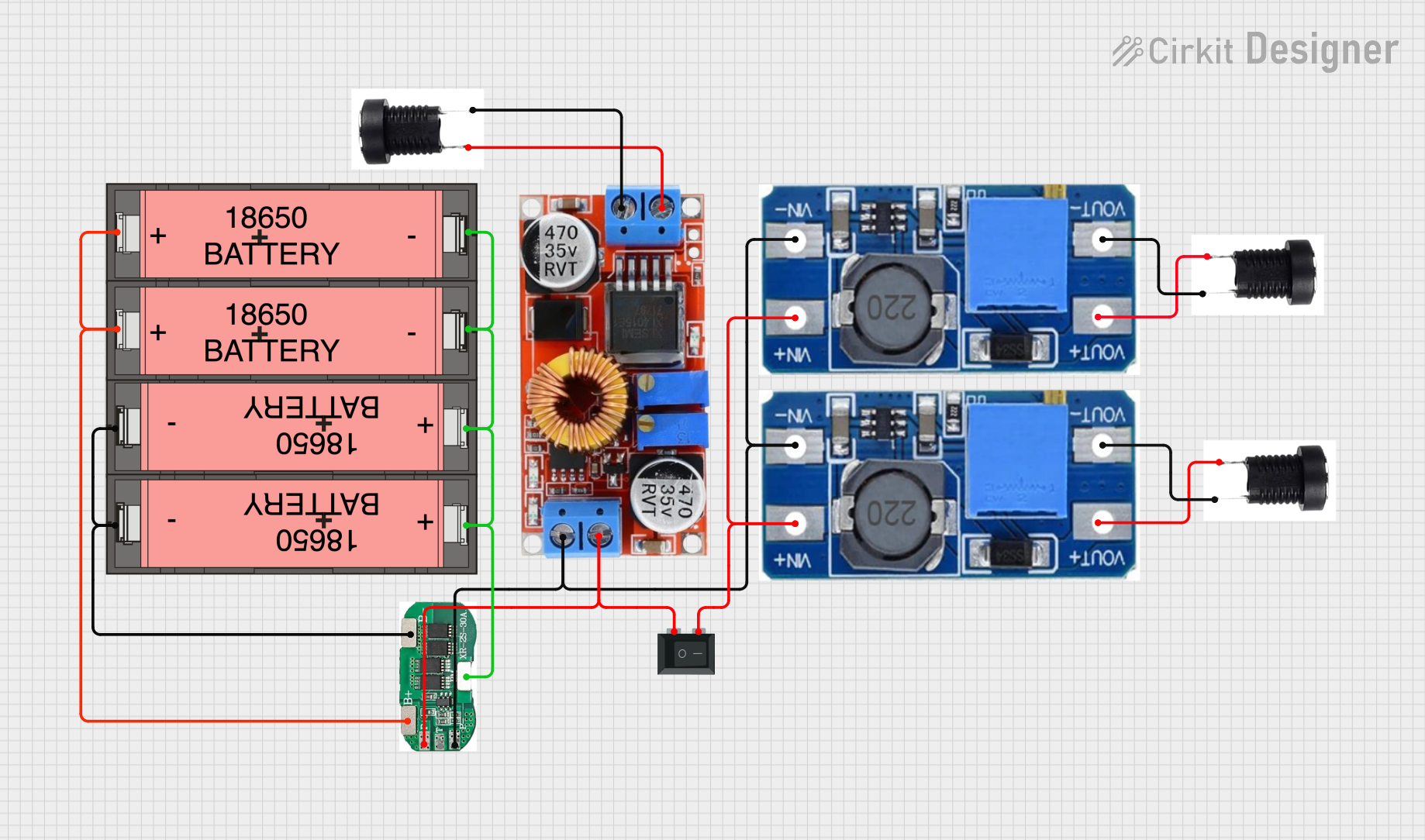
 Open Project in Cirkit Designer
Open Project in Cirkit Designer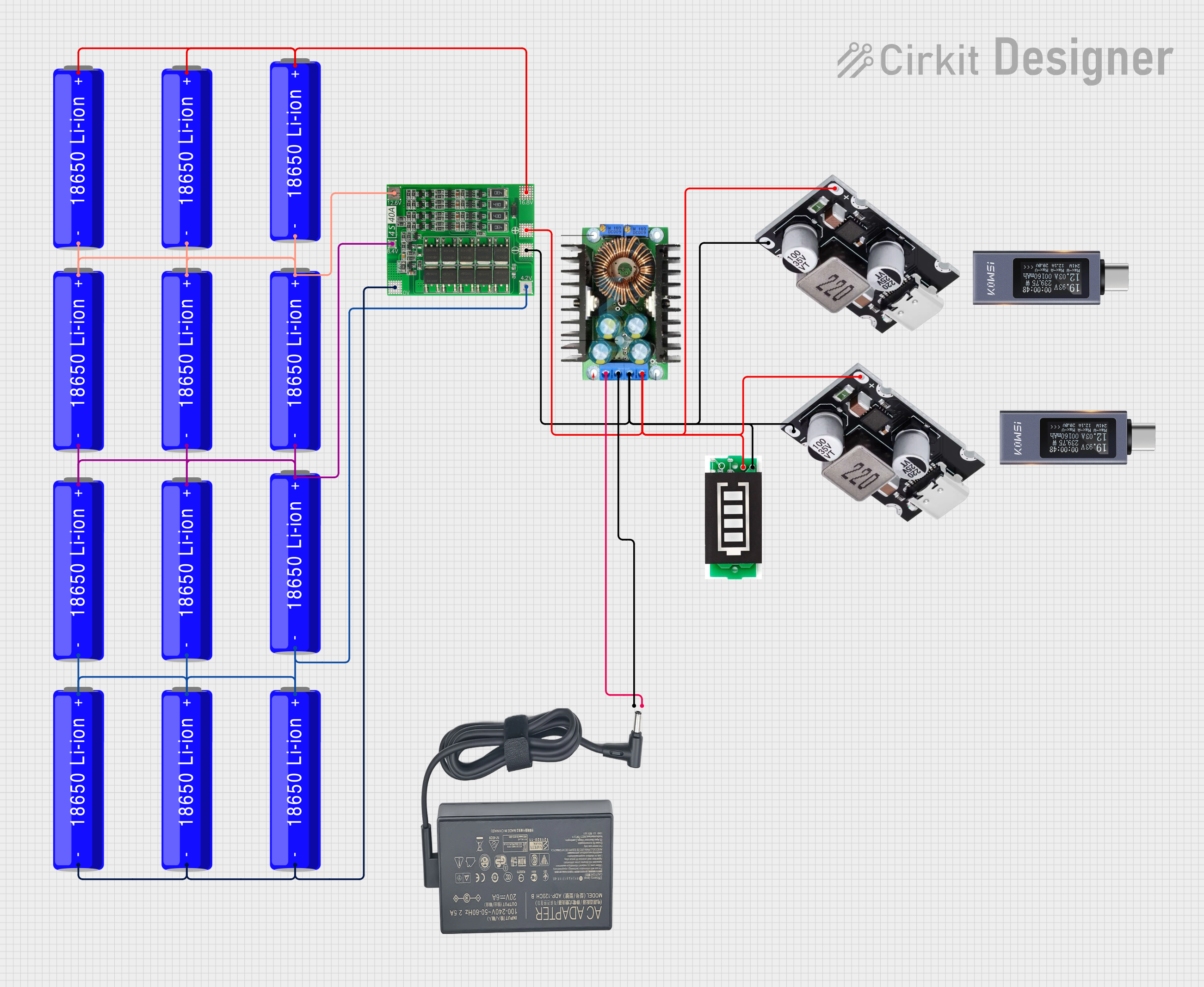
 Open Project in Cirkit Designer
Open Project in Cirkit Designer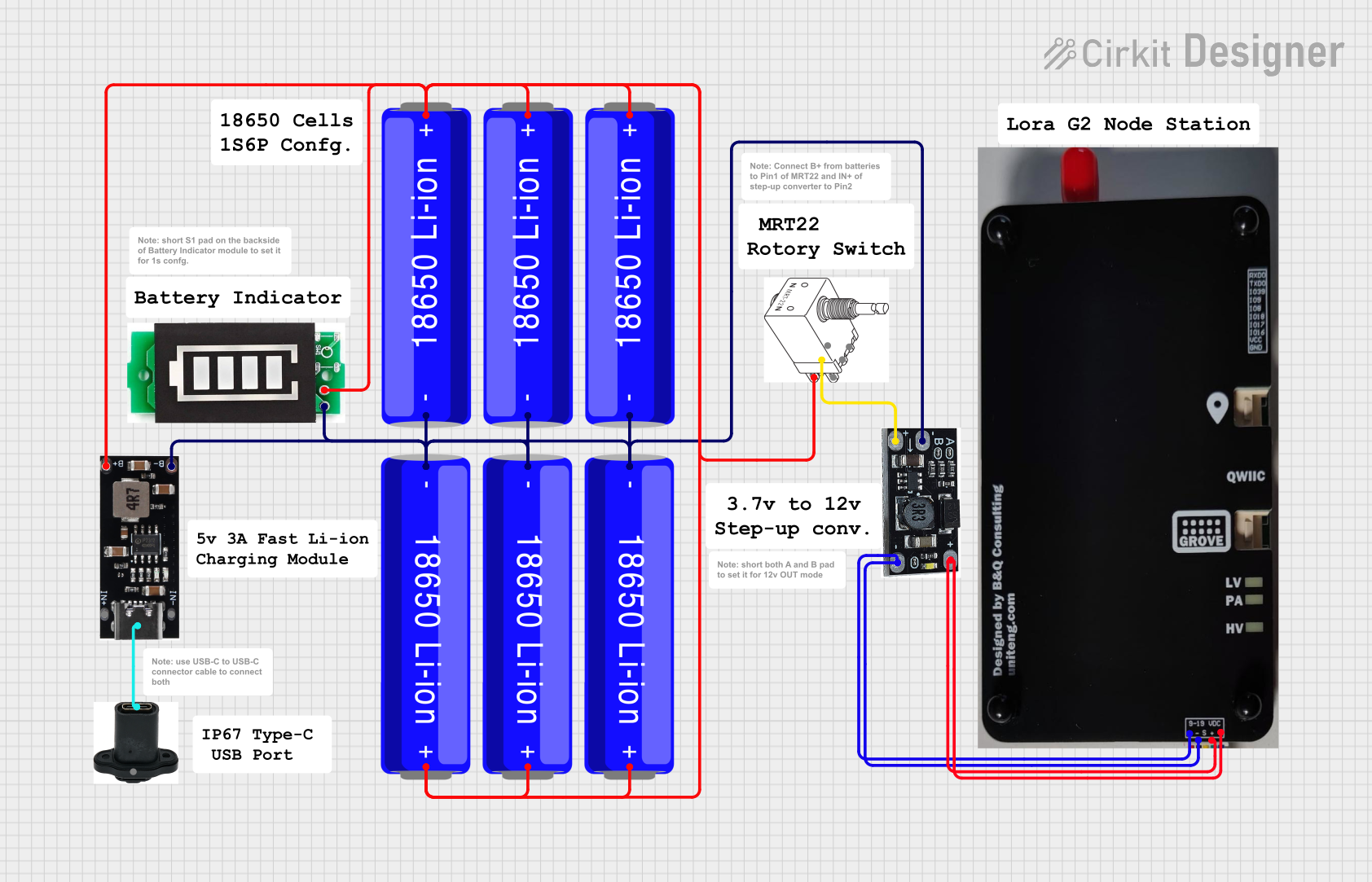
 Open Project in Cirkit Designer
Open Project in Cirkit Designer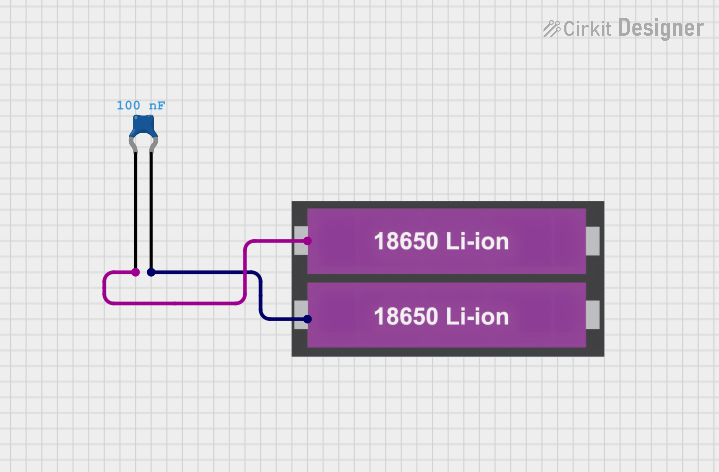
 Open Project in Cirkit Designer
Open Project in Cirkit DesignerExplore Projects Built with 18650 Li-ion Battery x 2

 Open Project in Cirkit Designer
Open Project in Cirkit Designer
 Open Project in Cirkit Designer
Open Project in Cirkit Designer
 Open Project in Cirkit Designer
Open Project in Cirkit Designer
 Open Project in Cirkit Designer
Open Project in Cirkit DesignerCommon Applications and Use Cases
- Portable electronics (laptops, cameras)
- Flashlights and headlamps
- Electric vehicles (bikes, scooters)
- Power tools
- DIY projects and custom battery packs
- Backup power supplies and UPS systems
- Hobby electronics and robotics (when used with appropriate battery management systems)
Technical Specifications
Key Technical Details
| Specification | Value |
|---|---|
| Nominal Voltage | 3.6 - 3.7 V |
| Capacity | Typically 2600-3500 mAh |
| Maximum Charge Voltage | 4.2 V |
| Discharge Cut-off Voltage | 2.5 V |
| Standard Charge Current | 0.5 C (1300-1750 mA) |
| Maximum Charge Current | 1 C (2600-3500 mA) |
| Continuous Discharge Current | Varies by model |
| Pulse Discharge Current | Varies by model |
| Chemistry | Lithium-ion |
| Form Factor | 18650 |
| Diameter | 18.6 mm |
| Height | 65.2 mm |
| Weight | Approx. 45-48 g |
Pin Configuration and Descriptions
The 18650 Li-ion Battery does not have a pin configuration in the traditional sense, as it is a cylindrical cell. However, it has two terminals:
| Terminal | Description |
|---|---|
| Positive (+) | The raised terminal on the top of the battery |
| Negative (-) | The flat terminal on the bottom of the battery |
Usage Instructions
How to Use the Component in a Circuit
- Battery Holder: Use a battery holder specifically designed for 18650 cells to ensure proper contact and safety.
- Polarity: Always connect the positive terminal of the battery to the positive side of your circuit and the negative terminal to the ground or negative side.
- Protection Circuit: Incorporate a protection circuit module (PCM) to prevent overcharging, over-discharging, and short-circuiting.
- Charging: Use a dedicated Li-ion battery charger that can provide the correct charging voltage and current.
- Series or Parallel Configuration: For higher voltage or capacity, batteries can be connected in series or parallel, respectively. Ensure all batteries are at the same state of charge before connecting them together.
Important Considerations and Best Practices
- Battery Management: Always use a battery management system (BMS) when using multiple batteries to ensure balanced charging and discharging.
- Temperature: Charge and discharge within the recommended temperature range (usually 0°C to 45°C for charging and -20°C to 60°C for discharging).
- Storage: Store batteries at a 40-60% charge level in a cool, dry place if not used for extended periods.
- Handling: Avoid mechanical shock, puncture, or deformation of the battery.
- Disposal: Do not dispose of in fire or water. Recycle according to local regulations.
Troubleshooting and FAQs
Common Issues
- Battery won't charge: Ensure the charger is functioning and the contacts are clean. Check for a required PCM.
- Short battery life: Verify that the battery is not being over-discharged or charged at an inappropriate rate.
- No output: Check for proper polarity and connection in the circuit. Ensure the battery is charged.
Solutions and Tips for Troubleshooting
- Charging Issues: Use a multimeter to check the voltage of the battery. If below 2.5 V, the battery may be over-discharged and require a specialized charger to recover.
- Battery Life: Avoid leaving the battery fully charged or discharged for long periods. Regular use and proper storage extend battery life.
- Safety Precautions: If the battery is swelling, leaking, or has a strange odor, stop using it immediately and dispose of it properly.
FAQs
Q: Can I charge 18650 batteries with a standard AA battery charger? A: No, you must use a charger specifically designed for Li-ion 18650 batteries.
Q: How can I increase the voltage for my project? A: Connect multiple 18650 batteries in series, but ensure they have the same capacity and state of charge.
Q: What is the life expectancy of an 18650 battery? A: The life expectancy varies based on usage, but typically they can withstand 300-500 charge cycles before capacity diminishes significantly.
Q: Can I use 18650 batteries in my device that requires AA batteries? A: No, 18650 batteries have a higher voltage and different size than AA batteries and should not be used as a substitute.
Q: How do I dispose of 18650 batteries? A: Take them to a battery recycling facility or a local collection point that accepts Li-ion batteries. Do not throw them in the trash.
Note: This documentation is for informational purposes only. Always consult the manufacturer's datasheet for the specific battery model you are using, as specifications can vary.